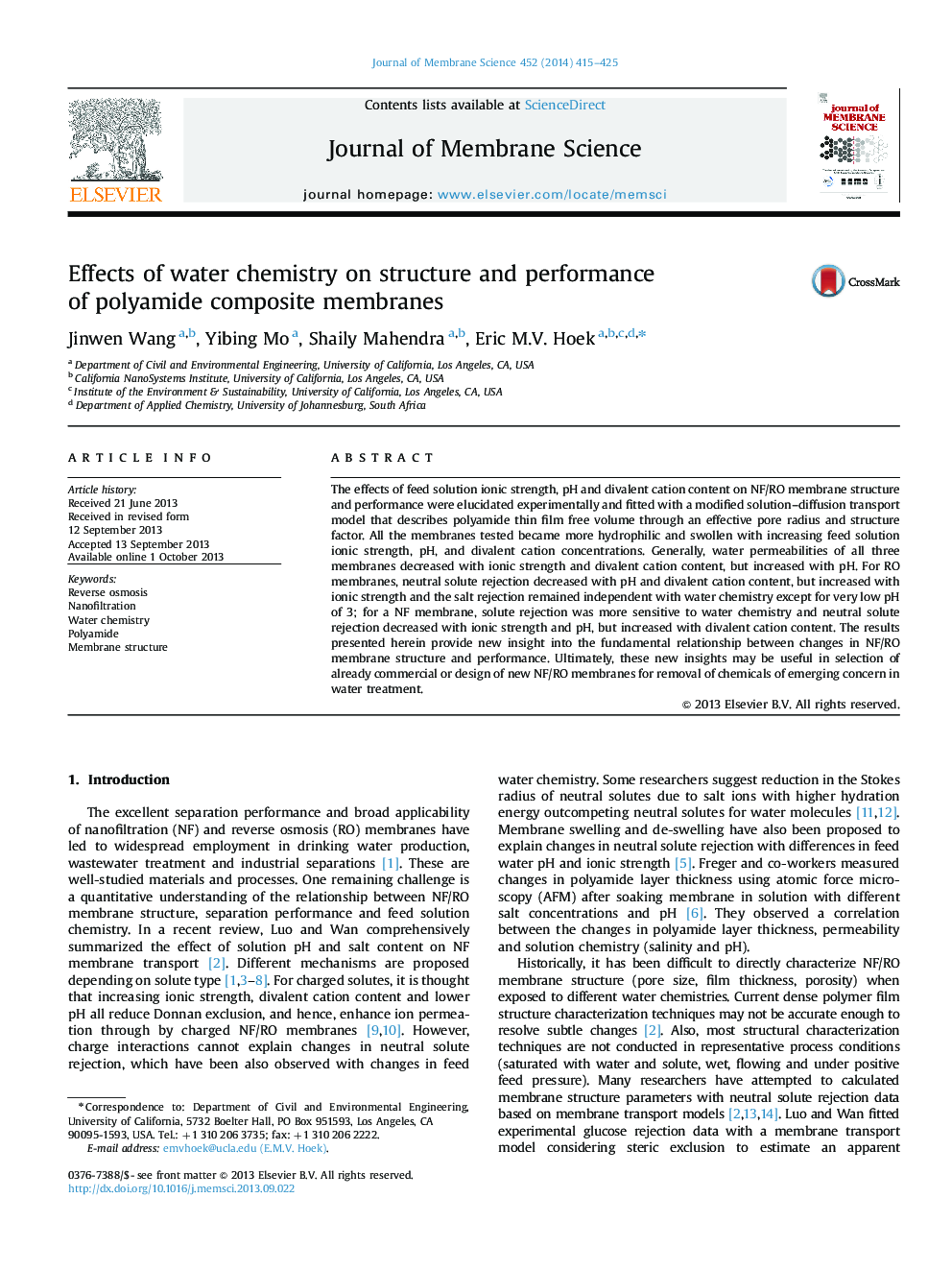| Article ID | Journal | Published Year | Pages | File Type |
|---|---|---|---|---|
| 633726 | Journal of Membrane Science | 2014 | 11 Pages |
•Facile methods to characterize NF/RO membrane structure via extended solution–diffusion transport model.•Membranes swell with different extents with feed water chemistry.•Membrane performance is dramatically, but largely reversibly affected by salt induced swelling and de-swelling.
The effects of feed solution ionic strength, pH and divalent cation content on NF/RO membrane structure and performance were elucidated experimentally and fitted with a modified solution–diffusion transport model that describes polyamide thin film free volume through an effective pore radius and structure factor. All the membranes tested became more hydrophilic and swollen with increasing feed solution ionic strength, pH, and divalent cation concentrations. Generally, water permeabilities of all three membranes decreased with ionic strength and divalent cation content, but increased with pH. For RO membranes, neutral solute rejection decreased with pH and divalent cation content, but increased with ionic strength and the salt rejection remained independent with water chemistry except for very low pH of 3; for a NF membrane, solute rejection was more sensitive to water chemistry and neutral solute rejection decreased with ionic strength and pH, but increased with divalent cation content. The results presented herein provide new insight into the fundamental relationship between changes in NF/RO membrane structure and performance. Ultimately, these new insights may be useful in selection of already commercial or design of new NF/RO membranes for removal of chemicals of emerging concern in water treatment.
Graphical abstractFigure optionsDownload full-size imageDownload high-quality image (216 K)Download as PowerPoint slide
